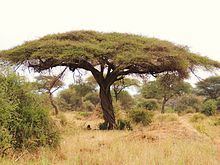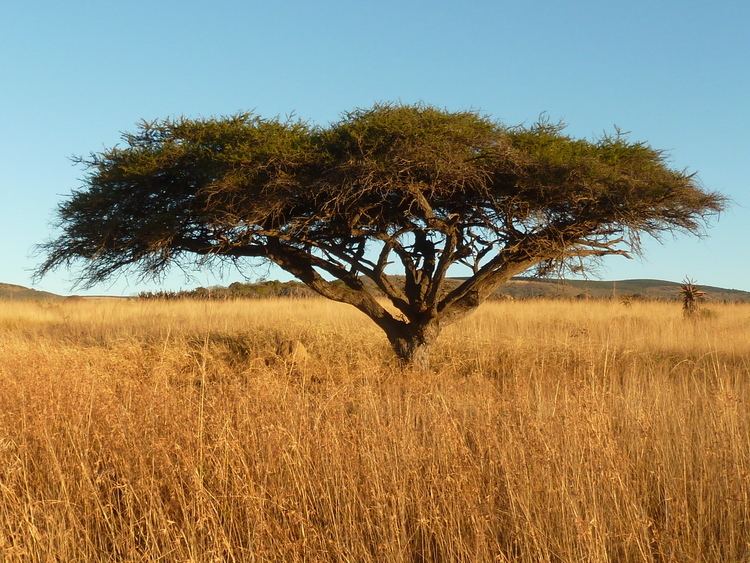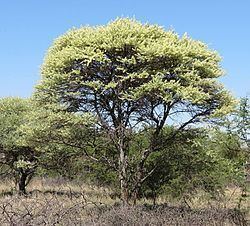Rank Species | Higher classification Thorn trees | |
 | ||
Similar Thorn trees, Gum arabic tree, Faidherbia, Vachellia seyal, Acacia senegal | ||
Vachellia tortilis, widely known as Acacia tortilis but attributed by APG III to the Vachellia genus, is the umbrella thorn acacia, also known as umbrella thorn and Israeli babool, a medium to large canopied tree native primarily to the savanna and Sahel of Africa (especially Sudan), but also occurring in the Middle East.
Contents

Distribution and growing conditions

Vachellia tortilis tends to grow in areas where temperatures vary from 0 to 50 degree Celsius and rainfall is anywhere from about 100–1,000 mm (3.9–39.4 in) per year.
Characteristics

In extremely arid conditions, it may occur as a small, wiry bush. It grows up to 21 m (69 ft) in height. The tree carries leaves that grow to approx. 2.5 cm (1 in) in length with between 4 and 10 pair of pinnae each with up to 15 pairs of leaflets. Flowers are small and white, highly aromatic, and occur in tight clusters. Seeds are produced in pods which are flat and coiled into a springlike structure.

The plant is known to tolerate high alkalinity, drought, high temperatures, sandy & stony soils, strongly sloped rooting surfaces, and sand blasting. Also, plants older than 2 years have been observed to be somewhat frost resistant.
Importance

Timber from the tree is used for furniture, wagon wheels, fence posts, cages, and pens. Vachellia wood was also used exclusively by the Israelites in the Old Testament in the building of the tabernacle and the tabernacle furniture, including the Ark of the Covenant. The pods and foliage, which grow prolifically on the tree, are used as fodder for desert grazing animals. The bark is often used as a string medium in Tanganyika, and is a source for tannin. Gum from the tree is edible and can be used as Gum Arabic. Parts of the tree including roots, shoots, and pods are also often used by natives for a vast number of purposes including decorations, weapons, tools, and medicines.

The Umbrella thorn is also an important species for rehabilitation of degraded arid land; it tolerates drought, wind, salinity and a wide range of soil types, and has the additional benefit of fixing nitrogen - an essential plant nutrient - in the soil via its interaction with symbiotic root bacteria.
Common names
Spread over such a large area inhabited by diverse cultures, the V. tortilis is known by a wide number of common names. These include (but are not limited to):
